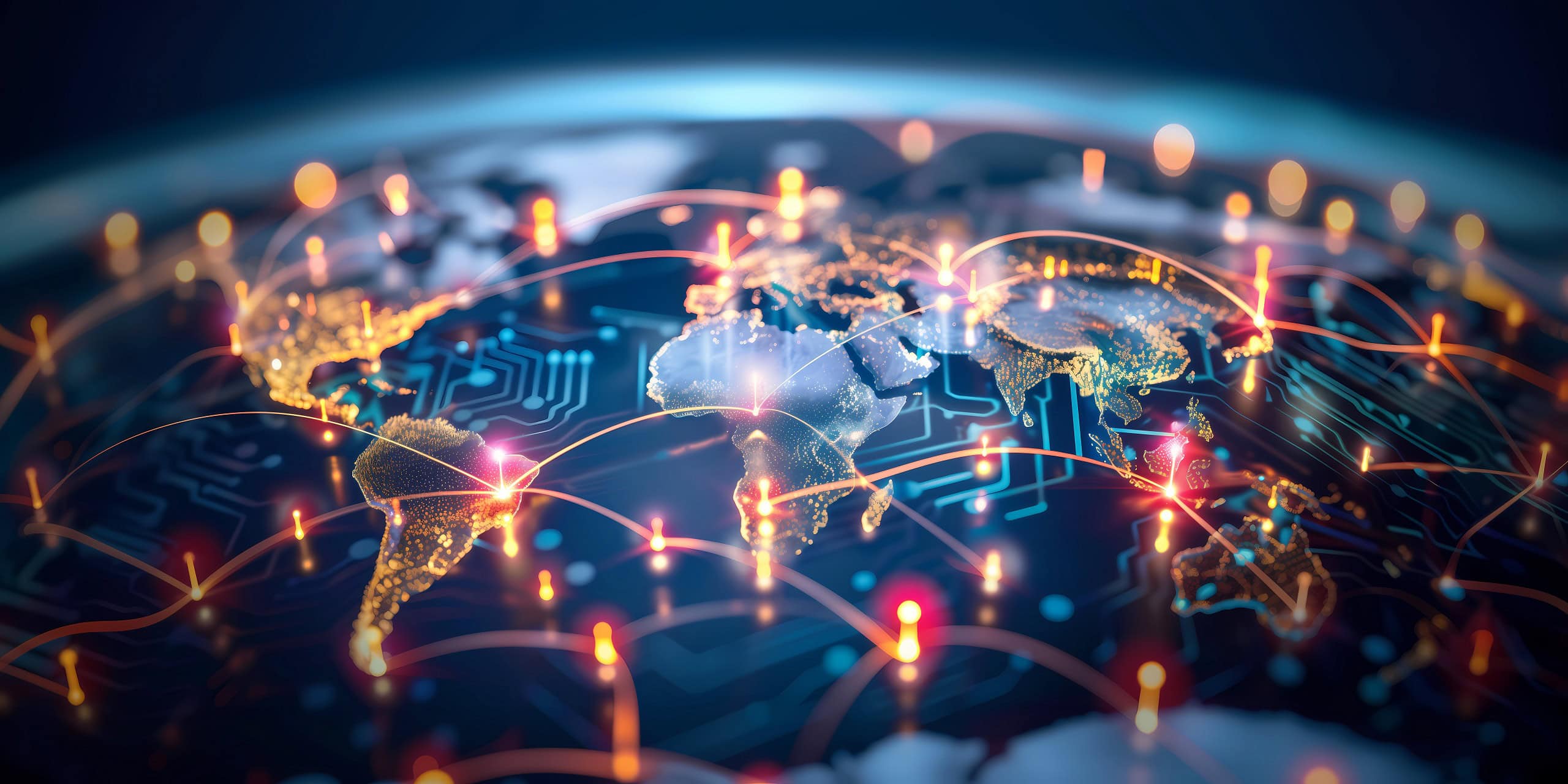This analysis is part one of a three-part series in response to breaking news and will be updated. Please contact pr@rstreet.org to speak with the author.
Chinese artificial intelligence (AI) developer DeepSeek recently sent shockwaves through both tech markets and political circles with the launch of its open-source “R1” AI model. The model competes favorably with leading U.S.-made models from OpenAI, Google, Anthropic, and Meta, and does so at a fraction of the cost (although the numbers are debated). Shortly after R1’s launch, U.S. stocks lost a staggering $1 trillion of market value on January 27th—with NVIDIA alone suffering a staggering $589 billion loss—which some attributed to DeepSeek’s debut of R1.
From a business and technical perspective, this episode demonstrates the remarkable volatility of the current AI ecosystem, where technology giants can have market positions altered seemingly overnight. It has left investors and market-watchers wondering what the future holds for America’s leading AI innovators with Chinese rivals rapidly catching up. DeepSeek even overtook OpenAI’s ChatGPT as the Apple App Store’s top free app. Chinese media said, “it’s a historical moment to surpass ChatGPT in the US,” and boasted of experts saying China “has caught up with the United States.”
While the market ramifications of DeepSeek’s ascendancy are still being debated, the policy ramifications are clearer. Given that many are referring to DeepSeek’s R1 launch as a modern “Sputnik moment” for America, the success of this important new AI model is making more policymakers realize that China indeed represents a formidable challenge to America’s geopolitical competitiveness and security, and the U.S. will need to adjust its policies to reflect that reality.
This three-part series will consider some of the broader ramifications of this development and possible policy responses to it. This opening essay considers the impact of the DeepSeek moment on global competitiveness and national security considerations.
Technological Advantage as a Source of National Strength and Security
President Trump referred to the release of R1 as “a wake-up call for our industries that we should be laser focused on competing to win,” and Senate Majority Leader John Thune likewise noted it was “a wake-up call for us that we’ve got to step up our game.” David Sacks, the new White House A.I. and Crypto Czar, argued that “DeepSeek R1 shows that the AI race will be very competitive” and said this development made Trump’s repeal of President Biden’s earlier AI executive order (EO) more important because it “hamstrung American AI companies without asking whether China would do the same.”
Sacks was referring to the new AI EO Trump signed on January 23rd, which aims to “solidify our position as the global leader in AI … to sustain and enhance America’s global AI dominance in order to promote human flourishing, economic competitiveness, and national security.”
These statements and the new EO signal an increased appreciation for the important relationship between a nation’s technological capabilities, global competitiveness, and geopolitical strength and security. This relationship has now been elevated in importance with the rise of AI, which scholars tend to agree is the “most important general-purpose technology of our era.”
General-purpose technologies (GPTs) are important because they are intertwined with almost every other sector of the economy and are used ubiquitously throughout society. A recent book on Technology and the Rise of Great Powers explains the crucial role that GPT technology diffusion plays in fueling economic growth, productivity, and national power. Many GPTs like electricity, motors, automobiles, electronics, and computers are also “dual-use” technologies, which have both peaceful and militaristic uses, making them even more important.
AI and high-powered computational systems can have profound ramifications for national security in both direct and indirect ways. These technologies have an obvious direct bearing on the sophistication of a nation’s algorithmic or autonomous systems that might be used to bolster offensive or defensive capabilities. Indirectly, a strong technology base allows a nation’s policies, institutions, and values to have a greater influence on global affairs. The importance of that indirect relationship will be discussed in part two of this series.
The Race against China
It is essential that the United States be a leader in AI to counter autocratic nations looking to lead in next-generation computational systems in this new “era of great power competition.” Russian President Vladimir Putin said in 2017 that “whoever reaches a breakthrough in developing artificial intelligence will come to dominate the world,” and in 2021, Chinese President Xi Jinping declared that “technological innovation has become the main battleground of the global playing field, and competition for tech dominance will grow unprecedentedly fierce.”
With China and the U.S. engaged in what scholars call “the great tech rivalry” of our time, many have increasingly worried that “China will soon lead the U.S. in tech.” The National Security Commission on Artificial Intelligence produced a major 2021 report that concluded that “America is not prepared to defend or compete in the AI era.”
The author of the 2018 book AI Superpowers: China, Silicon Valley, and the New World Order predicted that “[t]he winner in this race will likely depend on whether the final bottleneck is about core technology or implementation details. If the bottleneck is technical—major improvements for core algorithms—then the U.S. has an advantage. If the bottleneck is about implementation—smart infrastructure or policy adaptation—then advantage China.”
This exact issue played out recently with technologists and AI market analysts wondering whether the DeepSeek moment signified that Chinese AI developers had indeed figured out how to essentially do more with less by developing state-of-the-art models without the same compute capacity U.S. firms enjoyed. It remains too early to answer that question definitively, but what is clear is that, as some scholars have been pointing out, “[America’s] current lead is not as stable as many presume and should not be relied on as the basis of a long-term, sustainable competitive advantage.”
China made AI supremacy a national goal in its 2017 New Generation Artificial Intelligence Development Plan, which proposed by 2025 to “achieve a world-leading level and AI becomes the main driving force for China’s industrial upgrading and economic transformation.” Then, by 2030, China hoped that its AI systems “should achieve world-leading levels, making China the world’s primary AI innovation center,” on its way to “becoming a leading innovation-style nation and an economic power.”
The DeepSeek moment and other recent Chinese developments make it clear that the U.S. must take these efforts seriously and realize that the Chinese Communist Party (CCP) will take major steps to accomplish its goals. Beyond the various industrial policy efforts the CCP pursues to promote its national technology champions, China continues to engage in more aggressive forms of “innovation mercantilism,” including intellectual property theft and industrial espionage.
Some analysts speak of a growing “technology Cold War” and now an AI Cold War that is happening between the US and China because of these practices and the U.S. government’s response to them. A December 2023 report from the bipartisan House Select Committee on the Strategic Competition between the United States and the Chinese Communist Party highlighted how “the CCP has pursued a multidecade campaign of economic aggression against the United States and its allies” and stressed the need for the U.S. to “invest in technological leadership and build collective economic resilience in concert with its allies.”
Conclusion
As a leading AI policy scholar observes, we live in a world of “tech-enabled states,” where governments seek to “leverage their domestic tech industries to influence and design emerging global norms” and “reshape global power dynamics.” The ramifications of this for national security and geopolitical stability are profound and lead another scholar to conclude that “the United States needs to develop an overall AI strategy that aims not just at countering China’s moves in AI but advancing American AI supremacy.” These scholars identify why public policy toward AI and advanced computational systems is so vital. Wise policy choices for AI could help not only strengthen our economy and provide better services and jobs, but also bolster national security and allow our values to shape information technology platforms and markets globally. “Technology is thus a critical driver of national security, because it is the variable that determines the significance of all the other factors,” notes a 2020 Lexington Institute report. Part three of this series will discuss some of the specific policy steps needed to ensure a positive outcome in this regard.

